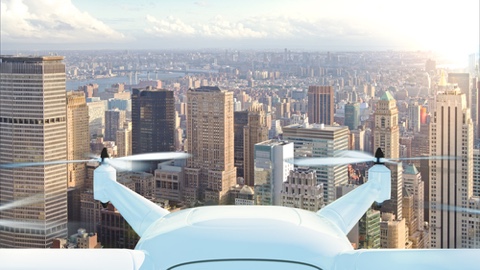
Dr. Vijay Kumar, researcher and dean of the University of Pennsylvania engineering school, and his team have been working on “swarms” of drones which don’t rely on motion capture or GPS – essentially navigating on their own.
Each 250g quadrotor is equipped with a Qualcomm Snapdragon Flight development board. The board includes an onboard quad-core computer, a downward facing VGA camera with a 160 degree field of view, a VGA stereo camera pair, and a 4K video camera. Qualcomm funded the research along with the Pentagon and the National Science Foundation.
Each drone uses visual inertial odometry (VIO) to estimate how far and in what direction it’s moved from its starting position, giving a good approximation of its relative location. To do this, it identifies and tracks visual features in its camera field of view. As each drone keeps track of its own position, it sends updates at 10 Hz over 5 GHz Wi-Fi to a ground station running Robot Operating System (ROS). The ground station collects all of those position updates, and sends commands back to the swarm to change formation. The individual drones receive a set of target coordinates and a time to start moving – each drone calculates is own trajectory.
According to Kumar, such devices can work as a group to canvass a wide area, capturing images and other data that would help emergency responders plot the next step — from a safe distance.
“The robots basically talk to each other,” Kumar said. “They each know where they’re going. They can use high-level algorithms to distribute themselves in complex ways to solve tasks.”
It’s estimated that the drones could be produced for about $1,000 each. Currently, Kumar’s team has demonstrated swarms with up to 12 drones, and see the potential for many more.
